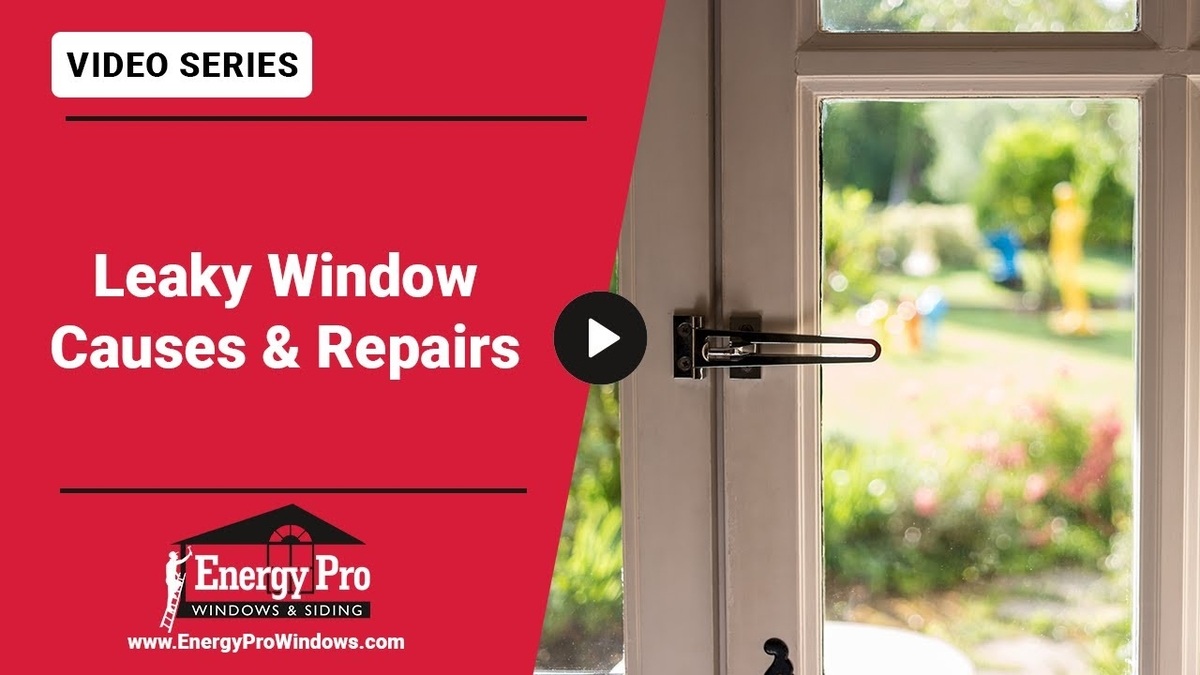Your new windows look great, but how do you keep them that way? Many homeowners assume replacement windows require little to no maintenance, but the truth is, neglecting them can lead to premature wear, drafts, or even costly repairs.
In this guide, we’ll walk you through the best practices for maintaining your windows based on their material type. From cleaning techniques to seasonal inspections, we’ll cover everything you need to know to protect your investment.
Why Maintenance Matters for Your New Windows
Homeowners often replace windows to improve energy efficiency, boost security, enhance curb appeal, and reduce long-term maintenance. However, even the best new windows will benefit from periodic maintenance. Proper upkeep can extend the life of your windows, reduce repair costs, and help them perform optimally through the seasons. With a little regular care, you can prevent common issues like seal failure, oxidation, and frame warping.
Key Maintenance Needs by Window Material
Each type of window material comes with specific maintenance requirements. Here’s a breakdown to help you understand what’s involved in maintaining your windows based on the material you chose.
1. Vinyl Windows: Low Maintenance with a Few Key Checks
Vinyl windows are popular for their low-maintenance design, but that doesn’t mean they’re entirely hands-off. The exterior of vinyl windows is highly resistant to elements and requires minimal cleaning. Many vinyl options also have glass that resists dirt, which further reduces maintenance needs. Here’s what you should keep in mind:
- Check Caulking Regularly: Every spring, take a few minutes to inspect the caulking around your vinyl windows. Over time, caulking may start to crack, which can lead to drafts or water intrusion. While high-quality caulks typically last 7–10 years, it’s a good idea to check annually. Look for signs of cracking, and if necessary, apply fresh caulking to maintain a secure seal.
- Clean the Glass Occasionally: Depending on the type of glass and the environment around your home, you may need to clean the inside and outside surfaces. Use a mild glass cleaner and a soft cloth to remove any dirt or grime that may accumulate.
2. Fiberglass Windows: Light Cleaning and Waxing for Long-Lasting Shine
Fiberglass windows are known for their durability, but they still require occasional upkeep. Unlike vinyl, fiberglass can develop oxidation over time, especially if exposed to pollutants in high-traffic areas. To keep them looking their best, follow these simple steps:
- Clean Regularly: Use a gentle cleaner to wash the frames and glass. Avoid abrasive cleaners, which may damage the finish.
- Apply Wax for Protection: Every few years, consider applying a thin layer of car wax, like Turtle Wax, to fiberglass frames. This helps prevent oxidation and keeps the frames looking like new. Buff gently with a soft cloth for a polished finish.
- Inspect for Paint Wear: Some fiberglass windows have painted finishes, which may require touch-ups over time. Check for signs of fading or peeling paint, and apply a fresh coat as needed.
3. Aluminum-Clad Wood Windows: Regular Inspection and Moisture Control
Aluminum-clad wood windows combine the beauty of wood with the durability of aluminum, but they require specific care to prevent issues like moisture damage and frame expansion.
- Watch for Swelling: Wood naturally swells with temperature changes, which can affect the window’s operation. If you notice your windows are harder to open or close in summer, this is due to the wood swelling. A seasonal inspection can help you catch any potential issues early.
- Inspect Seals and Silicone Edges: Check the aluminum cladding for any signs of separation or swelling, which could indicate water intrusion. Applying silicone around the edges can help maintain a tight seal.
- Maintain Hardware: Changes in wood frame shape can affect hardware alignment. If the hardware becomes misaligned, it may need tightening or adjustment. Ensure locks and latches work smoothly for security and ease of use.
Essential Window Maintenance Tips for All Window Types
Regardless of the material, these maintenance tips apply to all window types. They will help keep your windows in top shape for years to come.
1. Clean Windows Seasonally
- Glass Cleaning: Use a non-abrasive cleaner and soft cloth to clean glass surfaces and remove grime or dust.
- Frame Cleaning: Gently clean the frame with mild soap and water. Avoid harsh chemicals, especially on materials like fiberglass and vinyl.
2. Inspect Caulking and Weatherstripping
Caulking and weatherstripping prevent drafts and water damage. Over time, these materials wear down. Regularly inspect for cracks or peeling, especially after extreme weather, and replace as necessary.
3. Lubricate Hardware and Moving Parts
Lubricate hinges, locks, and other moving parts with a silicone-based spray once or twice a year to prevent rust and ensure smooth operation.
4. Monitor for Environmental Wear
If you live near a busy road or in a highly polluted area, pollutants can build up on your windows faster. Cleaning and, if necessary, waxing the frames more frequently can help maintain their appearance.
In Summary
Maintaining your windows after replacement may not be as hands-off as some expect, but with a few regular checks, you can extend their life, maintain their appearance, and protect your investment. The level of maintenance required will vary depending on your window material, with vinyl requiring the least upkeep, while aluminum-clad wood and fiberglass need a bit more attention.
If you ever need assistance with maintaining your windows, feel free to contact us. We’re here to help you keep your home comfortable, efficient, and looking its best.



